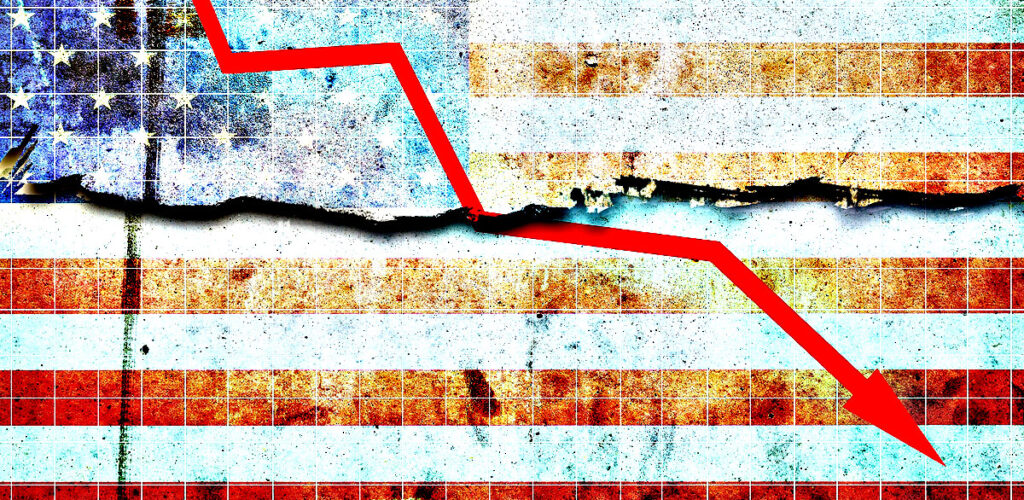 Banking heavyweights are increasingly vocal about the spiraling national debt and its detrimental effects. What was once a niche topic reserved for backroom budget meetings has been catapulted into public awareness out of sheer urgency.
Banking heavyweights are increasingly vocal about the spiraling national debt and its detrimental effects. What was once a niche topic reserved for backroom budget meetings has been catapulted into public awareness out of sheer urgency.
The mind-boggling figures and breakneck pace of accumulation can make the national debt seem abstract. However, mounting warnings from major financial institutions serve as stark wake-up calls for the average American.
A Troubling Snapshot
The national debt is a constantly moving target, making it tough to pin down or conceptualize. Here’s where the crisis stands now:
- US National Debt: The national debt is approximately $36.3 trillion and is on pace to reach over $50 trillion by 2034.
- Debt-to-GDP Ratio: US debt makes up roughly 120% of GDP–a figure expected to stretch to 166% by 2054.
- Interest Payments: The federal government pays more than $1 trillion annually in interest to service the debt.
- Deficit Growth: The federal deficit hovers around $1.9 trillion annually, turbocharging debt accumulation.
The Debt Spiral Explained
The national debt alone, while troubling, doesn’t fully capture the severity of the situation. A complete picture of the federal debt debacle is a complex array of federal budgeting, fiscal policy, debt borrowing, and broader economic factors.
Annual Federal Deficits
Deficit spending makes up the core of debt accumulation. Every year the federal government fails to balance a budget (last achieved in 2001), the debt hole gets deeper and deeper. For perspective, the last two presidents added a staggering $12 trillion to the debt, representing nearly one-third of the current total. As Morgan Stanley’s Chief Investment Officer Lisa Shalett explains, “Persistent deficits… exacerbate the debt spiral and reduce fiscal flexibility.”
Debt Servicing Weight
As unchecked government spending plunges the country further into debt, a growing portion of the federal budget is put toward servicing that debt. As Rob Haworth, senior investment strategy director for US Bank Asset Management, points out, “The proportion of the federal budget required to maintain the national debt has grown significantly.”
Recently, the cost of interest exceeded defense spending, demonstrating its growing strain on the budget.
Inflationary Pressures
Increased debt servicing and deficit spending demands more borrowing to support the growing weight of debt. “The U.S. government is now paying more in interest, requiring further debt issuance,” Haworth continues.
The deputy director for fiscal affairs at the International Monetary Fund (IMF), Era Dabla-Norris, furthered the point by explaining, “Excessive borrowing typically leads to inflationary pressures, which drive up interest rates and further increase the cost of servicing debt.”
Debt Borrowing Sustainability
US debt is a global phenomenon with foreign investors and central banks comprising a solid chunk of US debt through the purchase of Treasuries. Ray Dalio, the founder of Bridgewater Associates, laments, “I’m concerned about the softening demand to meet supply, particularly from international buyers worried about the U.S. debt picture.” Increasing dollar skepticism is mirrored by the global de-dollarization push as countries seek to decrease reliance on USD.
What are the negative effects of debt?
While concrete predictions surrounding debt metrics are easy to extrapolate based on current data, things get murky when trying to predict specific economic consequences of a full-blown debt crisis. Still, big banks’ predictions offer a glimpse of what investors might be able to expect:
Higher Taxes: The Federal Reserve’s embrace of Modern Monetary Theory (MMT) views taxes as a go-to source for revenue, forecasting higher tax rates as the federal budget becomes strained.
Currency Devaluation: As demand for the dollar wanes abroad, its value will inevitably diminish. That means less spending power, reduced savings, and squeezed investment accounts for American investors.
Limited Asset Yields: The performance of traditional markets such as stocks is reliant upon a strong dollar. Weaker USD limits economic and asset growth as investors remain cautious about where they allocate wealth.
Economic Volatility: The financial burden of national debt combined with its uncertain impact and unclear timeline results in severe market uncertainty. The resulting market volatility keeps investors close to safe-haven assets and away from more conventional instruments.
At one point, the debt will cause a problem…the problem will be caused by the market, and then you’ll be forced to deal with it in a far more uncomfortable way.–


